
AstroTurf is an American subsidiary of SportGroup that produces artificial turf for playing surfaces in sports. The original AstroTurf product was a short-pile synthetic turf invented in 1965 by Monsanto. Since the early 2000s, AstroTurf has marketed taller pile systems that use infill materials to better replicate natural turf. In 2016, AstroTurf became a subsidiary of German-based SportGroup, a family of sports surfacing companies, which itself is owned by the investment firm Equistone Partners Europe.
The 1968 Summer Olympics, officially known as the Games of the XIX Olympiad and officially branded as Mexico 1968, were an international multi-sport event held from 12 to 27 October 1968 in Mexico City, Mexico. These were the first Olympic Games to be staged in Latin America, the first to be staged in a Spanish-speaking country, and the first to be staged in the Global South. Consequently, these games also marked the first time that there would be a gap of two Olympic Games not to be held in Europe. They were also the first Games to use an all-weather (smooth) track for track and field events instead of the traditional cinder track, as well as the first example of the Olympics exclusively using electronic timekeeping equipment.

A race track is a facility built for racing of vehicles, athletes, or animals. A race track also may feature grandstands or concourses. Race tracks are also used in the study of animal locomotion.
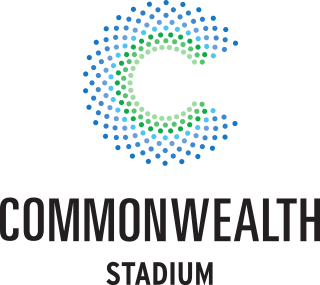
Commonwealth Stadium is an open-air, multipurpose stadium located in the McCauley neighbourhood of Edmonton, Alberta, Canada. It has a seating capacity of 56,302, making it the largest open-air stadium in Canada. Primarily used for Canadian football, it also hosts athletics, soccer, rugby union and concerts.
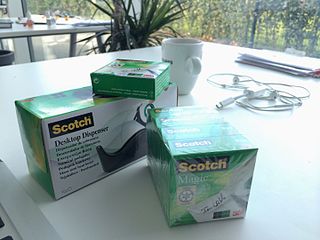
Scotch Tape is a brand name used for pressure-sensitive tapes developed by 3M. It was first introduced by Richard Drew, who created the initial masking tape under the Scotch brand. The invention of Scotch-brand cellulose tape expanded its applications, making it suitable for sealing packages and conducting item repairs. Over time, Scotch Tape has been utilized in various industries and households for its diverse adhesive solutions.

The P1FCU Kibbie Dome, known simply as the Kibbie Dome and formerly named the Kibbie-ASUI Activity Center, is a multi-purpose indoor athletic stadium on the campus of the University of Idaho in Moscow, Idaho. It is the home of the Idaho Vandals of the Big Sky Conference for four sports. Basketball was played in the venue until the autumn 2021 opening of the adjacent Idaho Central Credit Union Arena.
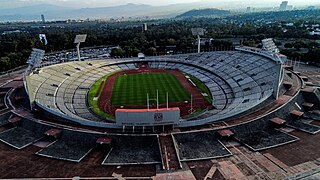
The Olympic Stadium is a multi-purpose stadium located inside Ciudad Universitaria in Mexico City. It was built in 1952 and at that time was the largest stadium in Mexico. This stadium has a capacity of 69,000. The first major event held in the stadium was the 1955 Pan American Games. During the 1950s and the 1960s this stadium was used mostly for college American football matches between the largest Mexican public universities at the time: UNAM and IPN. From the late 1950s it was used for football matches, some American football matches and athletics. American architect Frank Lloyd Wright called it "the most important building in the modern America".
At the 1968 Summer Olympics in Mexico City, 36 athletics events were contested, 24 for men and 12 for women. There were a total number of 1031 participating athletes from 93 countries.

Lillestrøm idrettspark, colloquially known as Lillestrøm stadion, is a sports facility located at Lillestrøm in Skedsmo, Norway. The main venue is Romerike friidrettsstadion, an athletics stadium with eight all-weather running tracks. It has multiple football pitches, including one with artificial turf and one with gravel. The park features of two arenas, LSK-Hallen with a full-size artificial football pitch and Skedsmohallen for indoor sports. The venue is located adjacent to Åråsen Stadion, the home ground of Lillestrøm SK. The main tenants for Lillestrøm idrettspark are Flisbyen BK and Focus FK in football, and Strømmen IF, Lørenskog FIL and Minerva IS in athletics. The stadium opened on 6 June 1920 and was the main venue for Lillestrøm SK until 1951. The athletics stadium opened two years later. In 2004, the artificial turf pitch was laid and in 2007 a new athletics venue and LSK-Hallen opened.

The Central Stadium is a multi-purpose stadium in Almaty, Kazakhstan and the largest sports complex in the country. It is currently used mostly for football matches. The stadium is shared by FC Kairat Almaty. It also serves as the home stadium for the Kazakhstan national football team.

Going (UK), track condition (US) or track rating (AUS) are the track surface of a horse racing track prior to a horse race or race meet. The going is determined by the amount of moisture in the ground and is assessed by an official steward on the day of the race.
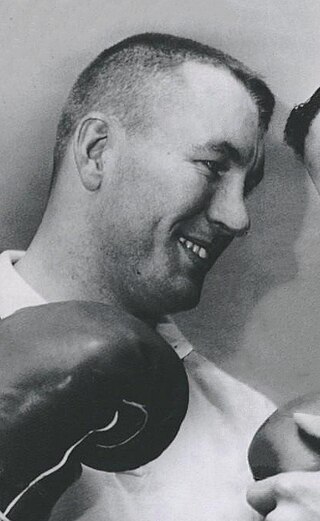
William Henry Nieder was an American athlete who mainly competed in the shot put.
Poly-Turf was a brand of artificial turf in the early 1970s, manufactured by American Biltrite of Wellesley, Massachusetts. It was the first specifically designed for American football, with a patented layered structure which included a "shock pad" between the artificial grass and the asphalt sub-surface. It used polypropylene for its artificial grass blades, rather than the nylon used in AstroTurf and 3M's Tartan Turf.
Tartan is a pattern of textile also known as plaid, often associated with Scotland.
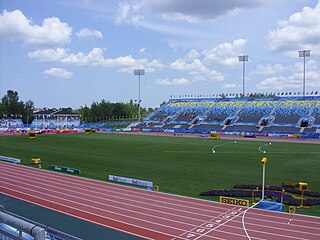
Croix-Bleue Medavie Stadium, formerly Moncton Stadium, is a track and field stadium on the campus of the Université de Moncton in Moncton, New Brunswick, Canada, built to host the IAAF 2010 World Junior Championships in Athletics. The $17 million venue opened in 2010. Although seating capacity had fluctuated early in construction, the stadium has 8,300 permanent seats, and is expandable to 25,000 via temporary seating. It is the home field for the Moncton Aigles Bleus soccer teams.
Tropical Park Race Track was a horse racing facility built on 245 acres (0.99 km2) at the current intersection of Bird Road and the Palmetto Expressway in Southwest Dade Miami part of metropolitan Miami, Florida and what is now Olympia Heights. The race track was built by Bill Dwyer, a prohibition era bootlegger, and Frank Bruen with backing from Canadian distilling tycoon, Samuel Bronfman. It opened on December 26, 1931, and closed January 15, 1972. The track hosted meets for both for Thoroughbred and Standardbred horses.

An all-weather running track is a rubberized, artificial running surface for track and field athletics. It provides a consistent surface for competitors to test their athletic ability unencumbered by adverse weather conditions. Historically, various forms of dirt, rocks, sand, and crushed cinders were used. Many examples of these varieties of track still exist worldwide.
While the most notable story coming out of 1968 was socio-political, politics involved with the Olympics was not something unique to this year. However, the year marked the beginning of several emerging elements of contemporary track and field.
The track surface of a horse racing track refers to the material of which the track is made. There are three types of track surfaces used in modern horse racing. These are:

Bert Salvatore Bonanno was an American track and field coach and sports administrator who has produced numerous Olympic champions and world-record holders.














